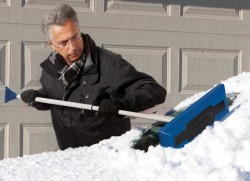What is Brake Lag?
A brake might lag for several reasons. The amount of power and air pressure that is used to stop a vehicle may vary, and it may take time for the air to go through the air to brake. You might have a query: what is brake lag? So here’s an easy way for you to understand: whenever you put your leg on the brake pad, it generates air pressure, and if it delays the brake in time, it is known as brake lag. Throughout this article, you will get to know more. And the solution to this is simple; open the line of the brake oil and press your brake pad for the air bubbles to escape.
Ways for the brake to lag
Air brakes cannot start operating immediately because air must travel via the airlines to the brakes. There is frequently a lag of at least one-half second between the time the brake pedal is pressed and the time the brakes begin to work. When the brake pedal is pressed on a vehicle with hydraulic brakes, the brakes engage instantaneously. The time it takes before the brake shoes have fully expanded and are applying full pressure. It can also be the amount of time until the brakes fully release in older all-drum brake cars, which some people refer to as drag. Disc brake cars are less prone to it, but they can still have symptoms.
Reasons for the brake to lag
Your foot compresses the air first when you step on the brakes, which takes time and results in delayed or lessened braking on one or more wheels. Fortunately, the solution is straightforward. By bleeding the braking system, any air bubbles in the system will be flushed out. It’s a common thing that air braking takes more time than hydraulic braking.
Distance before braking
The distance a vehicle travels after using the brakes until it comes to a complete stop. This distance is determined by the lining's ability to generate friction, the brake drums' ability to dissipate heat, and the tires' ability to grip the road. Brakes are never taken for granted by professional drivers. Before putting a vehicle into operation, the braking system must be examined and adjusted. Professionals are aware of the braking system's capabilities and limitations, and they know how to make use of them.
The 2-second rule
Most states have adopted the two-second rule to maintain a safe following distance between your car and the vehicle ahead. To put it another way, if you're going 40 mph, you should keep at least four car widths between you and the vehicle ahead of you. At 55 mph on dry pavement, the air brake lag distance adds around 32 feet. At 55 mph, the entire stopping distance for an average driver with decent traction and brakes is over 450 feet.
Hydraulic brakes to work
There is frequently a lag of at least half a second. When the brake pedal is pressed and the brakes begin to work, when the brake pedal is pressed on a vehicle with hydraulic brakes, the brakes immediately engage.
Spring brakes to work
For emergency stopping and parking, spring brakes are used. Service brakes are air-applied, whereas spring brakes are not. Spring brakes are quite different from all other brakes.
Conclusion
In a nutshell, the brake lags the airflow, which takes time to pass through the airlines. Technically, this article will answer your question: “what is brake lag?” we urge you to calculate the braking time, a braking system can be calculated for each supercharged vehicle. The average reaction time of motorists is about 3/4 seconds. At 55 mph, this translates to an extra 60 feet traveled. The braking distance is the distance it takes to come to a complete stop after applying the brakes. A big truck can stop in around 170 feet and 4 1/2 seconds at 55 mph on dry roads with effective brakes.




